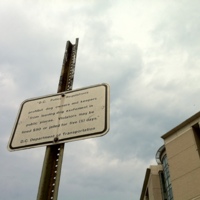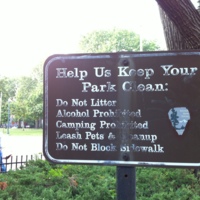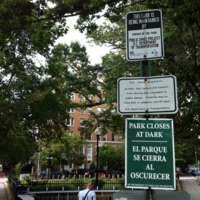Monumentality in Microcosm
| Jurisdictional Fragmentation |
Much of the mid-twentieth century is characterized by increasing tensions between the federal government and District residents agitating for greater autonomy or ‘home rule.’ These conflicts affected the ways in which public open space was managed and programmed. In particular, the 1940s marked the beginning of relative decline for the management of triangle parks, as a system and as individual sites. The system’s integrity became increasingly compromised as the jurisdictional oversight of reservations slowly transferred from the National Park Service (an agency fashioned from the Office of Public Buildings & Grounds) to an ever-widening array of agencies. This was facilitated by legislation enacted by Congress in 1932 which permitted the agency in charge of public reservations (then the Office of Public Buildings & Public Parks within the Office of the President of the United States) to transfer jurisdiction of property to the D.C. government (Devlin 1933; US Government Accountability Office 2005; Heine 1953/2003). This bypassed the traditional cumbersome transfer process which required Congressional approval for each property in question.
In 1948, over 300 triangle reservations were transferred from the National Park Service to the D.C. Government (after Historical Society of Washington, 2012). Its likely that as triangles formed part of the right-of-ways originally acquired in the late 18th century, the 1948 transfers were made to facilitate the management and expansion of roadways for automobiles. Numerous reconfigurations to right-of-ways date to this period, for example roadway widenings and tunnel underpasses (Barthold 1993; Bednar 2006; Colyer 1987). In the decades since, many triangle reservations have been sliced by turning lanes or ‘slips’ (Figures 13 and 25). In many cases, shrunken triangles lost their vegetative treatment and were paved over entirely (Colyer 1987). This is the case at Reservations 68A and 69A at Burke and Gompers Parks NW, which in the present day are two brick traffic islands but were planted with trees in 1921 (HABS No. DC-675).
Other Early jurisdictional transfers occurred as a newly formed D.C. Recreation Board began programs for D.C. residents in local parks, an arrangement formalized in 1949 with Memorandum of Understanding between the NPS and the Recreation Board (US GAO 2005).
Still later in 1968, all recreational facilities were transferred to the D.C. Department of Recreation (the successor agency to the Recreation Board) while jurisdiction of local parklands was transferred to the D.C. Department of Public Works (Council of the District of Columbia 1989; Gutheim and Lee 2006). The 1960s were also marked by the abolition of the three-Commissioner D.C. Government, which was replaced with a Presidentially-appointed Mayor-commissioner and City Council (Council of the District of Columbia 2012). Soon afterward in 1973, the Home Rule Act permitted election of the Mayor and City Council by D.C. residents.
In 1988, the City Council created the Department of Recreation and Parks, merging the oversight of recreational facilities from the former Department of Recreation with jurisdiction of local parklands from the Department of Public Works (Council of the District of Columbia 1989). Despite this consolidation of facilities and lands with the DRP, the last quarter of the 20th century saw continual fragmentation of jurisdiction for triangle parks between a variety of local, regional, and federal agencies. At present, the panoply of jurisdictions include (in order of acreage held) the National Park Service, the D.C. Department of Parks and Recreation, the D.C. Department of Transportation, the D.C. Public Schools, the Washington Metropolitan Area Transit Authority, and various private entities (Faulkner 2012).





